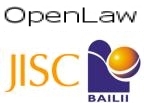(1) This section applies in the case of a child who is being or
has been carried by a woman as the result of the placing in her of an embryo
or of sperm and eggs or her artificial insemination.
(2) If –
(a) at the time of the placing in her of the embryo or the
sperm and eggs or of her insemination, the woman was a party to a
marriage, and
(b) the creation of the embryo carried by her was not brought
about with the sperm of the other party to the marriage,
then, subject to subsection (5) below, the other party to the marriage
shall be treated as the father of the child unless it is shown that he did
not consent to the placing in her of the embryo or the sperm and eggs or to
her insemination (as the case may be).
(3) If no man is treated, by virtue of subsection (2) above, as the
father of the child but –
(a) the embryo or the sperm and eggs were placed in the woman,
or she was artificially inseminated, in the course of treatment services
provided for her and a man together by a person to whom a licence applies,
and
(b) the creation of the embryo carried by her was not brought
about with the sperm of that man,
then, subject to subsection (5) below, that man shall be treated as the
father of the child.
(4) Where a person is treated as the father of the child by virtue of `
subsection (2) or (3) above, no other person is to be treated as the father
of the child.
(5) Subsections (2) and (3) above do not apply –
(a) in relation to England and Wales and Northern Ireland, to
any child who, by virtue of the rules of common law, is treated as the
legitimate child of the parties to a marriage,
(b) (applies to Scotland only), or
(c) to any child to the extent that the child is treated by
virtue of adoption as not being the child of any person other than the
adopter or adopters.
(6) Where –
(a) the sperm of a man who had given such consent as is
required by paragraph 5 of Schedule 3 to this Act was used for a purpose
for which such consent was required, or
(b) the sperm of a man, or any embryo the creation of which
was brought about with his sperm, was used after his death,
he is not to be treated as the father of the child.
(7) The references in subsection (2) above to the parties to a marriage
at the time there referred to –
(a) are to the parties to a marriage subsisting at that time,
unless a judicial separation was then in force, but
(b) include the parties to a void marriage if either or both
of them reasonably believed at that time that the marriage was valid; and
for the purposes of this subsection it shall be presumed, unless the
contrary is shown, that one of them reasonably believed at that time that
the marriage was valid.
(8) This section applies whether the woman was in the United Kingdom or
elsewhere at the time of the placing in her of the embryo or the sperm and
eggs or her artificial insemination.
(9) In subsection (7)(a) above, "judicial separation" includes a legal
separation obtained in a country outside the British Islands and recognised
in the United Kingdom.

